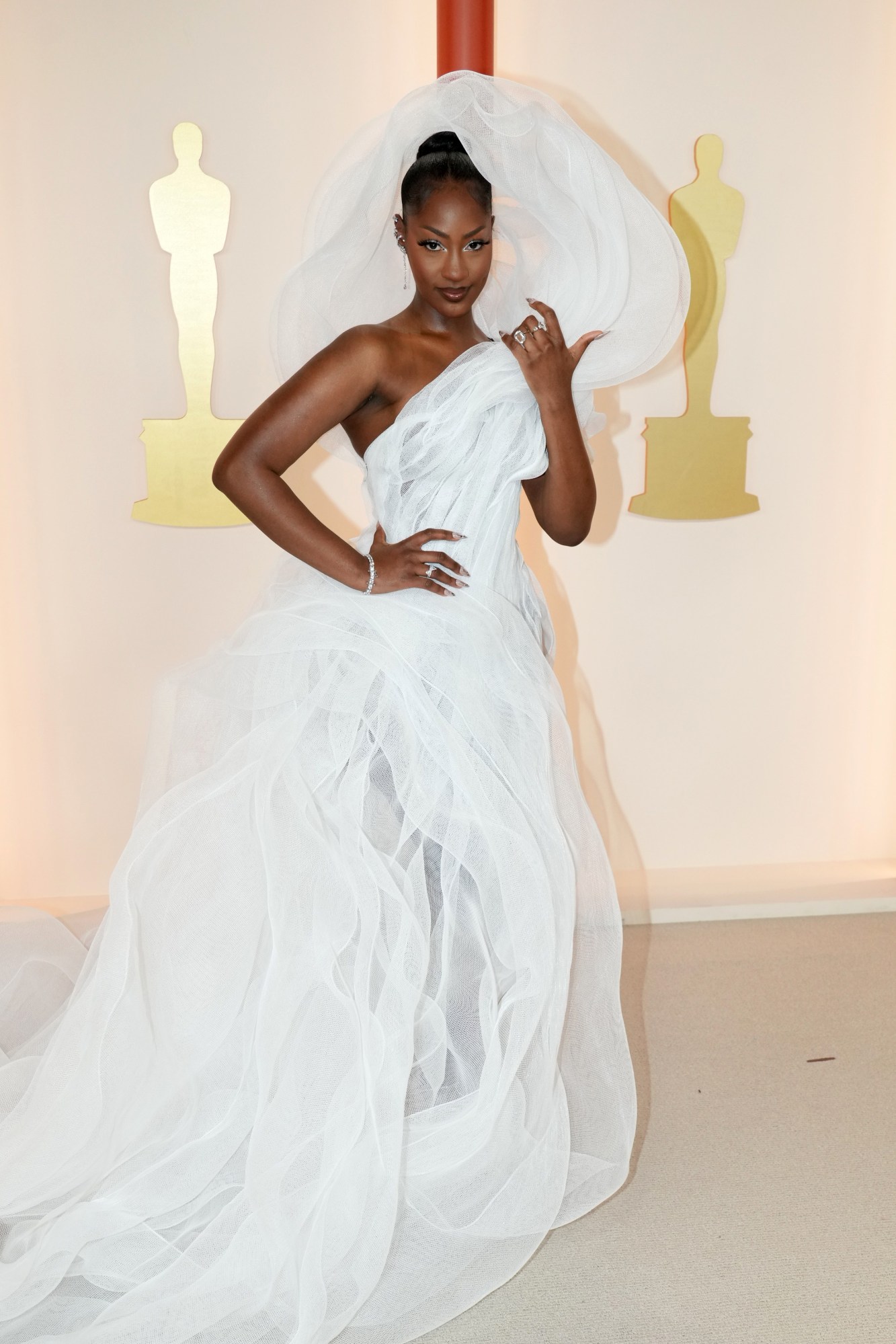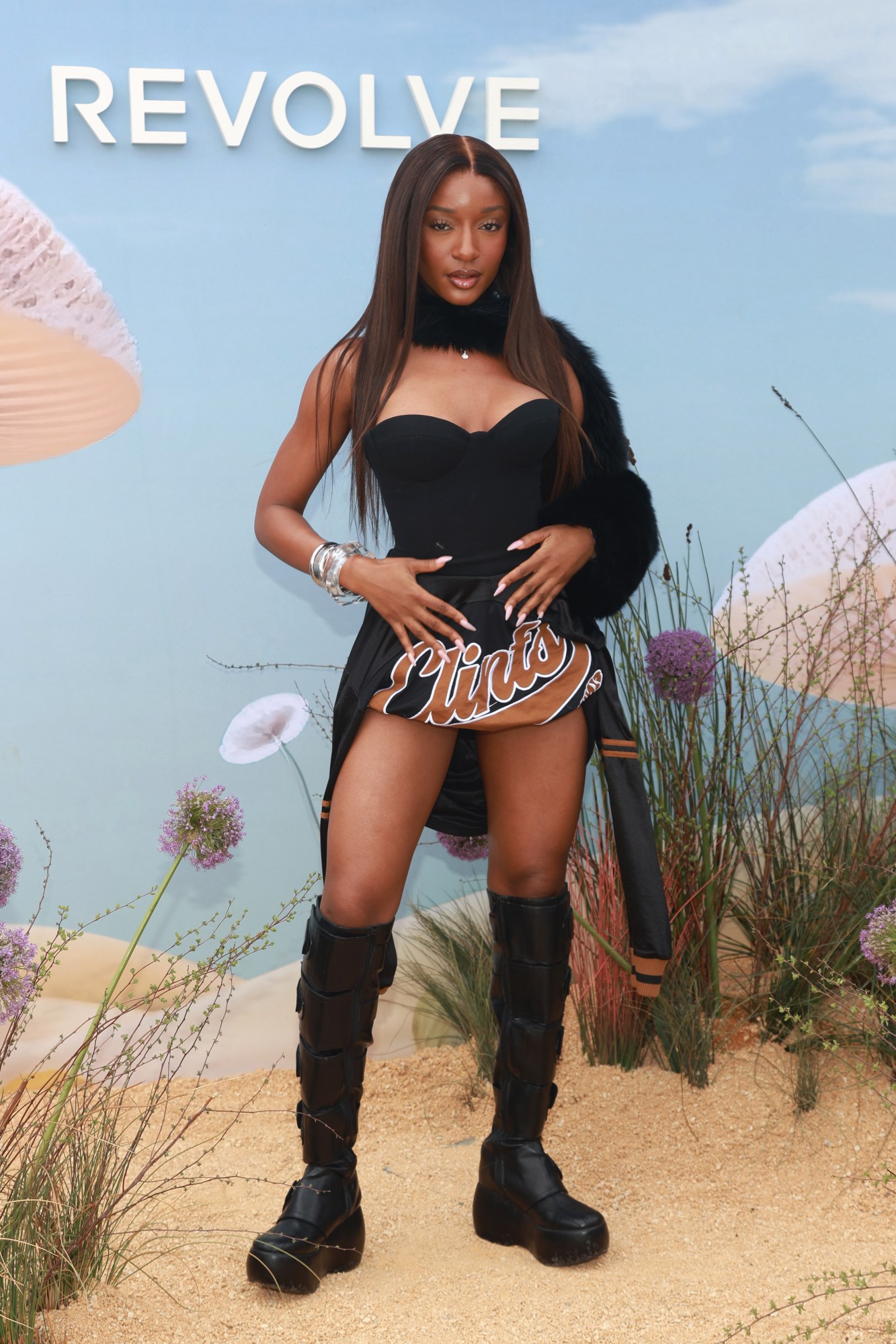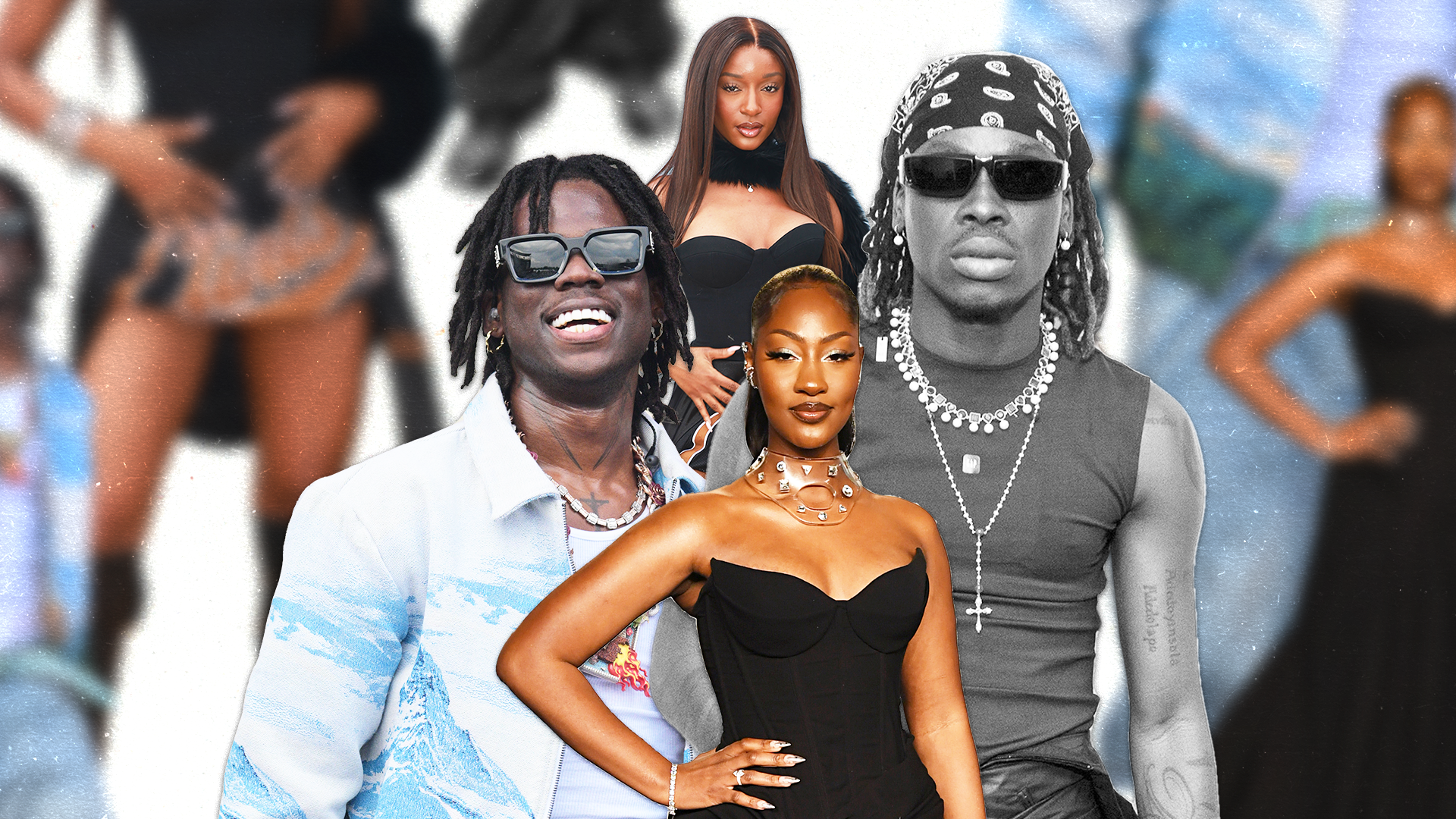Since the start of the decade, Afrobeats has surged into the global cultural mainstream, with artists like Tems, Wizkid and Burna Boy topping charts worldwide, and regularly picking up gongs and nominations at the Grammys, Academy Awards and more. While ten years ago, feats of this kind were unheard of for the genre’s artists – today, though, they’ve become the norm.
Beyond its earworm hooks and hypnotic, percussive beats, though, a key factor fuelling the worldwide appetite for Afrobeats is its artists’ fashion appeal. Indeed, the relationship between Afrobeats and fashion is far from a new one, harking all the way back to the genre’s original hero: Fela Anikulapo Kuti. With a style as pan and pro-African as his music, every one of Fela’s fits – from his signature neck chain and skin-tight pants to his flamboyant Ankara tailoring – was a loving tribute to the continent’s style heritage, and a perfect visual aid to the music he pioneered.
In Fela’s wake, many other artists have taken his cue, ensuring their style echoes their sound. Grammy-winning Nigerian artist Burna Boy is perhaps one of the best examples of this; a master of a mashup of traditional African glamour and a modern-day flair, his looks reflect the dress sensibilities of today’s West African youth. A perfect example was his Coachella 2019 look: a matching trench coat and pant set designed by LVMH Prize finalist and Nigerian designer Kenneth Ize.
Another, of course, is Tems, whose debut on the red carpet of the Academy Awards caused a real stir. The “Wait For U” singer wore a structured white floor-length gown by Lever Couture, the extravagant top of which was called out by online commentators for obstructing her seatmates’ views of the stage. While the outfit may not align with (stereo)typical perceptions of Nigerian fashion, it did exactly what any Nigerian outfit worth the fabric it’s crafted from should: draw attention.
With the bar set so high, the pressure’s on for a new generation of Afrobeats stars to live up to the same chic standards set by their forebears, all while carving out their own distinct visual identities. Fortunately for them, there’s plenty of help at hand. With the overlap of fashion and entertainment at its most significant ever, pulling an attention-grabbing look – whether on screen, stage or the red carpet – has become more important than ever. The role of the stylist has never been more crucial in crafting the face of modern celebrity, and Afrobeats is no exception. If anything, you could argue that the stakes are even higher, given that its associated artists aren’t just seen as singers and performers, but rather as cultural ambassadors.
Who are the styling stars of the Afrobeats world, you ask? Below, we introduce you to three of the names defining the looks of the genre, playing a crucial role in exporting it to the world.

Dunsin Wright
Dunsin Wright’s top styling tip is pretty simple: listening to what her clients want. Obvious as it sounds, it isn’t a standard approach. Still, it’s one that allows her to focus on how they want to look and be perceived, rather than what she, or even her clients’ fans, want to see. ‘‘I think it is very important to listen to what my clients want to wear because they are humans,’’ Dunsin says. ‘‘I want them to wear what they feel comfortable with, because when you are comfortable and happy in your fit, it shows.’’
A perfect example of the efficacy of her strategy is Tems – when her Oscars’ look provoked uproar for potentially disrupting the views of the people behind her, Dunsin was largely unbothered. Why? She knew she had covered all her bases, had done her job and, most importantly, that Tems was happy with it, too. So did the people sat behind, as was proven when they reached out to the star’s team to convey how much they loved her look, how unbothered they were, and how they thought Tems deserved a special award for the outfit alone. ‘‘I’ve learnt not to listen to people when they do not what they are talking about,’’ Dunsin declares. ‘‘And frankly, not a lot of people to do especially on the internet.’’
Together, Dunsin and Tems have cultivated an effortlessly cool, perma-glam style that is now her trademark. Tems’ dress at her first Met Gala is a case in point. ”I had an idea of what I wanted to put her in but I also needed to ensure it stayed true to her Tems’ style, and that it was something she’d be confident in,” Dunsin says. Even after landing on a fit, she decided to customise the look further, tweaking drapes, and swapping out headpieces until she and Tems felt it truly reflected her as a person and an artist. The result was a striking Robert Wun monochrome corset dress with elbow-length gloves and a feathered headpiece that placed Tems top of the nights’ best-dressed lists.

Uncle Soft
If you are a fan of Afrobeats’ new gen – think Rema, Fireboy DML, BXNX, and Joeboy – chances are you’ve come across Soft’s work. Born Samuel Adekolu, the stylist and designer known to most as Uncle Soft has become one of the most significant fashion forces in the industry. The go-to for artists looking for an edgier and more streetwear-aligned aesthetic, Soft’s perhaps best known for his masterful use of poppy accessories to elevate the laid-back, too-cool-for-school style these artists want to project.
‘‘Afrobeats is fun, it’s youthful. I want the clothes to express that.’’ Soft says. Looking at some of his work with singer and rapper Blaqbones, a regular client of his, the thread that runs through his looks – whether he’s off duty or on the cover of an album – is indeed an effortless youthfulness, as you can see from his signature thick glasses, babushka scarf, and accessories to match. In approaching his work, the question Soft most often asks himself is: how do you serve fashion that echoes the voice of his clients’ core fan base – young Nigerians.
In tackling this, Soft seeks to balance street fashion trends with a robust sensibility for timeless fashion. The best testament to his skills, some might say, is Fireboy DML. With him, Soft’s styling motive is to create looks that feel stylish, but not overly fussy – essentially, he wants fans to look up to him, but still see themselves reflected. The result is often boots, cargo pants, a bulky jacket or a simple sleeveless vest and an array of strategically arranged accessories. ‘‘You can’t be singing to people you don’t look like – who will take you seriously?’’ Soft asks. ‘‘I try to be the person that makes you look good – to look like a star but, also like one of the people.”

Pat Ada Eze
Pat Ada Eze’s has taken a number of turns, including a stint as the editor of Nigerian fashion magazine, Stylevitae. While she may no longer work in editorial anymore, her desire to craft a compelling story remains strong. ”I always say that that’s the most important thing with any project,” Pat says. “I ask myself what’s the story that’s being told here? What’s the vision for this particular project? And I go from there, aiming to capture whatever vision the client is trying to project in the best possible light.”
Today, Pat works closely with two of the biggest — and youngest —hitmakers to come out of Africa: Rema and Ayra Starr. For stars like these, it is not only important to ensure they come off as uniquely and authentically themselves, but that they also instinctually connect with the young listeners that make up their core fan base. ‘‘That’s not just the case for today’s stars — it’s always been this way. It takes more than having a great discography to have millions of people be completely enamoured by you. To truly be a star and inspire that level of adoration you need to excite people and one of the best ways to do that is through fashion.’’
Ayra Starr – the quintessential teen pop star of her generation – exemplifies this. Barely two years after debuting, the singer has developed the most instantly recognisable style in Nigerian pop music, with its relatability as the key to its success. As simple as her looks are — often comprising a miniskirt, a pair of boots, a tank top and a pair of gloves – they’re effective. Of course, her sartorial repertoire is broader than that — the black, drawstring Vicnate gown and pink velvet opera gloves that Pat styled her in, for example, was a real gamechanger — but it is the Ayra Starr uniform – as some fans have taken to call her mini skirt and boots combo – that truly demonstrates the crucial role that fashion plays in shaping the visual identities of today’s Afrobeats stars, calling to mind the iconic stage uniforms of the late, great Fela Kuti.
